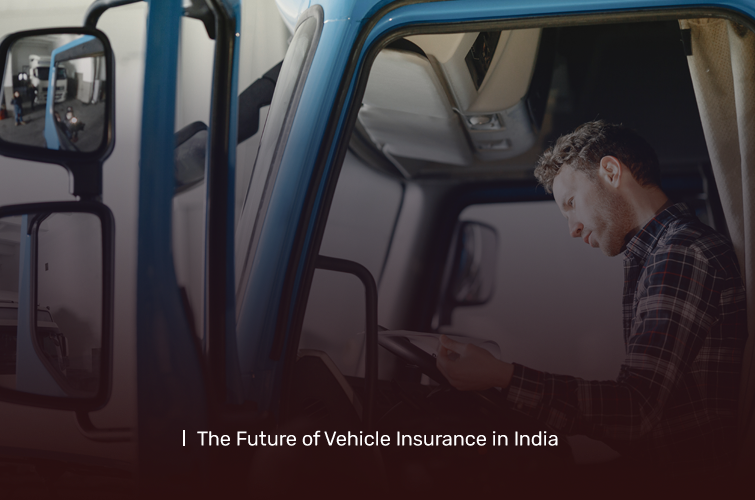Telematics: The Future of Vehicle Insurance in India
Summary
The Insurance Regulatory and Development Authority of India (IRDAI) has allowed general insurance companies to introduce telematics-based motor vehicle insurance policies, which use devices to collect data on driving habits such as mileage, speed, and braking to calculate premiums. There are two models of telematics-based insurance: “pay how you drive,” which assesses risk based on driving behavior, and “pay as you drive,” which calculates premiums based on the distance driven.
Telematics-based insurance is expected to lead to more people taking out “Own Damage” insurance and could potentially make the roads safer by incentivizing safe driving habits.
In the newly announced IRDAI motor vehicle insurance model, telematics plays a significant role. Across India, telematics solutions are popular among commercial vehicle operators but are considerably new to many individual vehicle owners.
With the announcement, the Insurance Regulatory and Development Authority of India (IRDAI) has permitted all general insurance companies to introduce tech-enabled new motor vehicle damage policies.
The insurance cover should be modeled on the following aspects:
- Pay As You Drive
- Pay How You Drive
The above-mentioned insurance covers are expected to influence vehicle owners to consider taking add-ons- Own Damage (OD) insurance covers.
These insurance covers already exist in other countries; it is relatively new to the Indian market.

In general, an insurance provider calculates motor vehicle premiums based on the following parameters:
- Make, model and variant
- Age of vehicle
- Location of Insurance
- Type of insurance cover
- Add-ons (If there are any)
The list seems to be good enough, but it misses out on some of the critical parameters. They are mileage, driving behaviors like over-speeding, sudden acceleration, deceleration, and frequently applying brakes.
To capture such data, telematics is the way forward. Before exploring its potential usage, let’s understand what telematics is.
Telematics is a combination of both telecommunication and informatics systems. It is used to send, receive, and store motor vehicle information via telecommunication devices. The devices range from GPS systems, navigation systems, mileage recorders, accelerometers, dash cams, etc.
These devices are generally a system you install in your car that records information about your driving habits, such as the number of kilometers you drive, your speed, and how often you apply brakes.
Telematics systems can also analyze and deliver information on the time of the day you often drive, location of your vehicle, total duration a vehicle remains ideal, fuel consumption, etc.
Now that you know the wide range of telematics use cases let’s see how telematics assists insurance providers.
What is Telematics Insurance?
Telematics insurance is vehicle insurance where a telematics box is fitted in your vehicle. The telematics box (also known as a black box) measures various aspects of how, when, and where you drive.
Let’s understand the role of telematics in the “pay how you drive” policy.
Pay How You Drive
When you buy a vehicle and apply for insurance, the insurance company may ask you to install a tiny telematics device or sensor to track your driving behavior. The information collected from that little telematics box will be transferred via SIM card inside the telematics box. It works like your mobile phone SIM card. It sends the information to the insurer, and the insurer analyses that telematics data to determine the risk you pose to others and yourself.
If you are less risky to yourself and others, you will attract a lesser premium and vice versa.
Pay As You Drive
Pay as you drive means the insurance premium is calculated dynamically, typically according to the amount driven.
In this, the insurance coverage is based on your vehicle’s odometer reading. You must declare the total kilometer you will drive in a year and pay the premium accordingly.
This model benefits office-goers who usually travel via public transport like metro, suburban trains, buses, or app-based taxi services.
It is assumed that such people use their own vehicles sparingly, driven mainly by the owners with the family members as co-passengers. Hence, they will drive more responsibly.
Now that you have a fair understanding of the “pay how you drive” and “pay as you drive” insurance models.
Let’s see how the new telematics-based insurance differs from the existing one.
In the current model, insurance companies determine the policy price depending on Insurance Declared Value or IDV.
IDV is the maximum insurance value fixed by the insurer that is provided in case of theft or total loss of the insured vehicle. IDV is the current market value of the vehicle.
If the vehicle owner suffers total loss under any pre-determined circumstances, IDV is the compensation the insurer will provide to the policyholder. However, the existing system doesn’t consider your driving behavior and distance traveled. So, this is not a fair insurance model.
In that case, if you are relatively a safe driver and don’t get the opportunity to claim your insurance, you subsidize the risky driver on the road. So, they end up claiming most of the insurance.
With telematics in place, the “pay as you go” and “pay as you drive” policies will bring a level playing field for the insured vehicle regarding insurance premiums.
The point to note there is telematics penetration has a lot to offer to both insured and insurers. The new insurance model is expected to get more people to apply for “Own Damage” cover and the already existing mandatory third-party liability insurance. We must wait some more to understand how this pans out, but integrating telematics could make the roads safer.
Team VAMOSYS
Team VAMOSYS have been into GPS business since 2014 and have good experience on GPS Vehicle Tracking, Fuel Monitoring, Fleet Management and GPS Tracker Devices. Writes article on various topics to share the industry experiences and knowledge.

